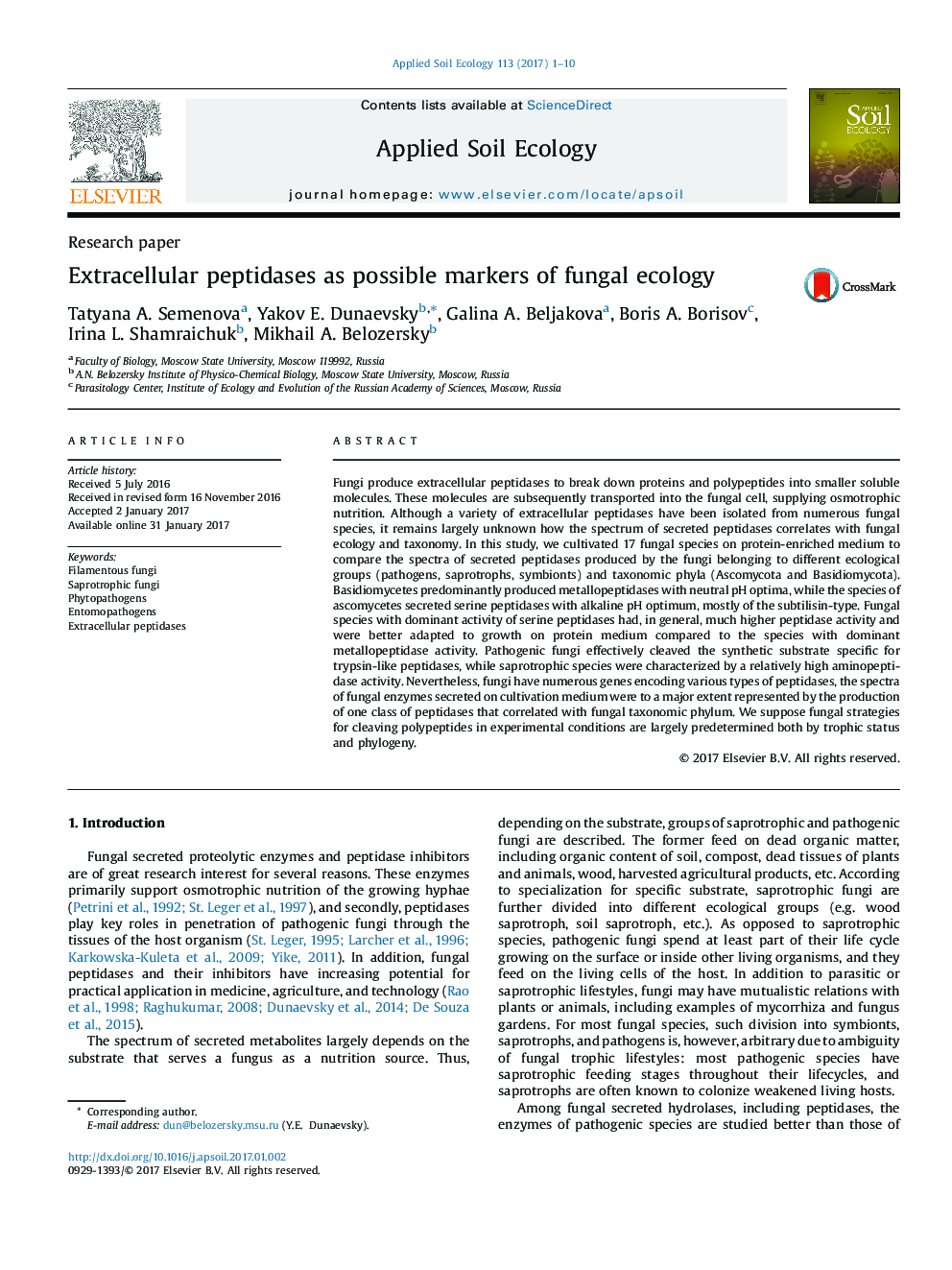| کد مقاله | کد نشریه | سال انتشار | مقاله انگلیسی | نسخه تمام متن |
|---|---|---|---|---|
| 5742729 | 1617770 | 2017 | 10 صفحه PDF | دانلود رایگان |
- Extracellular peptidases can serve as markers of ecological features of fungi.
- Asco- and basidiomycetes secrete mainly serine and metallopeptidases, respectively.
- The species of pathogenic fungi secrete trypsin-like peptidases.
- The role of secreted enzymes in proteolysis depends on community composition.
Fungi produce extracellular peptidases to break down proteins and polypeptides into smaller soluble molecules. These molecules are subsequently transported into the fungal cell, supplying osmotrophic nutrition. Although a variety of extracellular peptidases have been isolated from numerous fungal species, it remains largely unknown how the spectrum of secreted peptidases correlates with fungal ecology and taxonomy. In this study, we cultivated 17 fungal species on protein-enriched medium to compare the spectra of secreted peptidases produced by the fungi belonging to different ecological groups (pathogens, saprotrophs, symbionts) and taxonomic phyla (Ascomycota and Basidiomycota). Basidiomycetes predominantly produced metallopeptidases with neutral pH optima, while the species of ascomycetes secreted serine peptidases with alkaline pH optimum, mostly of the subtilisin-type. Fungal species with dominant activity of serine peptidases had, in general, much higher peptidase activity and were better adapted to growth on protein medium compared to the species with dominant metallopeptidase activity. Pathogenic fungi effectively cleaved the synthetic substrate specific for trypsin-like peptidases, while saprotrophic species were characterized by a relatively high aminopeptidase activity. Nevertheless, fungi have numerous genes encoding various types of peptidases, the spectra of fungal enzymes secreted on cultivation medium were to a major extent represented by the production of one class of peptidases that correlated with fungal taxonomic phylum. We suppose fungal strategies for cleaving polypeptides in experimental conditions are largely predetermined both by trophic status and phylogeny.
Journal: Applied Soil Ecology - Volume 113, May 2017, Pages 1-10
